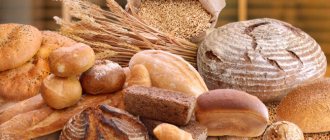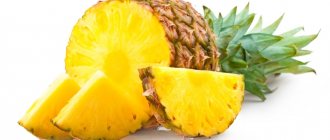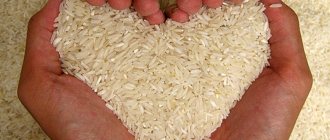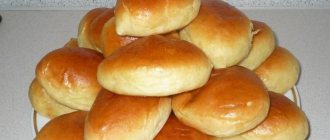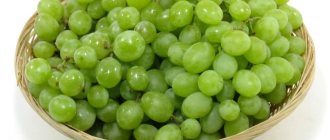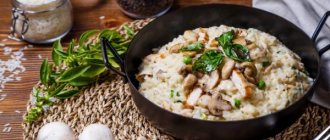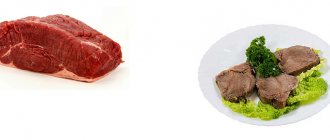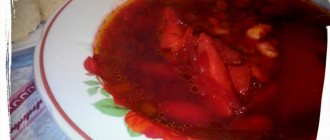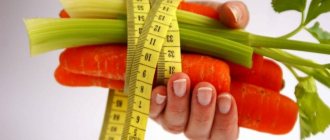Everyone knows about the beneficial properties of beans, but what about the harm? Is soup with these legumes as healthy as nutritionists and doctors say? Who should avoid this dish and how to get the most out of the most important meal of the day – lunch?
Beans as a crop are considered one of the oldest, and in Ancient Rome they were used not only as food, but also as a cosmetic product. Nowadays, legumes are very common in Ukrainian cuisine; salads, soups, borscht and even pies are prepared on their basis. But before you start cooking any of these bean-based dishes, it wouldn't hurt to learn more about them!
The benefits and harms of bean soup
Doctors and nutritionists around the world often insist that a person leading a healthy lifestyle must eat properly, and the presence of soups and borscht on the menu is a prerequisite. A full lunch always consists of liquid food, because this is what helps start the metabolism and regulate the salt balance.
Beans are considered a medicinal product, so they are not suitable for daily consumption; moreover, poorly soaked beans can cause increased gas formation. It is not recommended to eat beans if you have gastritis, pancreatitis and other diseases of the gastrointestinal tract.
Beans contain easily digestible vegetable proteins that can completely replace animal proteins, so bean-based dishes are an excellent alternative to meat. In addition, it contains starch, carotene, amino acids and all the most useful vitamins (A, E, K, B1, B2, C and PP).
Soups, of course, do not consist of beans alone. They add a variety of vegetables and sometimes cereals, so liquid food provides us not only with vitamins, but also with fiber, which can cleanse the body. Abrupt refusal of soup can worsen your health and even cause constipation, so you need to have lunch.
Bean soup for weight loss
Beans cannot be unambiguously called a dietary product, but there are many mono-diets based on them. They are contraindicated for people with gastrointestinal diseases, but with their help you can safely lose about 5 kg in a week.
The complex carbohydrates contained in beans can make you feel full very quickly, which is why they are so valued among those losing weight. Just a handful of beans can provide energy for the rest of the day.
Dietary bean soups are very easy to prepare: you need to avoid using meat broth and do not fry, otherwise the recipes do not limit you in any way.
Bean soup with chickpeas, lentils and pasta
Products (for 6 servings)
- Canned red beans (washed) – 150 g
- Canned chickpeas (washed) – 150 g
- Canned white beans (washed) – 150 g
- Feather pasta or other small shaped pasta – 120 g
- Brown lentils – 75 g
- Dried champignon mushrooms – 15 g
- Olive oil – 4 tbsp. l.
- Carrots (cut into cubes) – 1 pc.
- Petiole celery (chopped) – 1 stalk
- Onion (cut into cubes) – 1 pc.
- Garlic (finely chopped) – 1 clove
- Fresh parsley (chopped) – 1 tbsp. l.
- Dried chili pepper (crushed) – 1/2 tsp. (optional)
- Vegetable broth – 1.5 l
- Salt - to taste
- Ground black pepper - to taste
- Pecorino cheese or similar (grated) (optional) for serving
- Chopped parsley for serving
How to make bean soup with chickpeas, lentils and pasta:
- 1. Sort the lentils, rinse and pour into a large saucepan. Pour in 2 cups of water and bring to a boil over high heat. Reduce heat and cook lentils until soft, about 15-20 minutes.
- 2. Meanwhile, pour 180 grams of warm water over the dried mushrooms and leave for 15-20 minutes.
- 3. Place the boiled lentils in a sieve and rinse under running cold water. Remove the mushrooms from the water, squeeze and cut into small pieces. Reserve mushroom water.
- 4. Heat olive oil in a large heavy saucepan and add carrots, celery, onion, garlic, parsley and crushed chili pepper (optional). Cook vegetables, stirring, for about 5-7 minutes, until soft.
- 5. Pour broth and mushroom water over the vegetables and add chopped mushrooms. Bring the mixture to a boil, then add all the beans, green peas and lentils, add salt and pepper to taste, cover with a lid, and cook the bean soup for 20 minutes.
- 6. Add pasta to the soup, bring to a boil, cook the bean soup until the pasta is ready, about 7-8 minutes. Add salt and pepper to taste.
Serve the bean soup in portioned bowls immediately, sprinkled with cheese.
Beans during pregnancy and pregnancy
While carrying a child and breastfeeding, a young mother is responsible for two lives at once, so she must eat regularly and variedly. If you do not have any gastrointestinal diseases or contraindications, then beans should definitely be included in your diet.
During pregnancy, it is allowed to eat legume soups in small quantities, but within reasonable limits. Diversify your menu with borscht, solyanka, fresh fruits and vegetables, without focusing on just beans. If you are wondering whether it is possible to eat such dishes while breastfeeding (during lactation), consult your pediatrician and carefully monitor your baby’s reaction to a new product.
Bean soup for children
Children's doctors often focus on the fact that by the age of three, a child should already be able to eat any food, but beans are introduced into complementary foods starting at 11 months of age, since they are difficult to digest for a child's fragile stomach. It is better to give green beans to a one-year-old baby, gradually increasing the volume, but also do not forget about other products.
Beans can almost completely replace meat, so it is better to cook the soup in water, and soak the legumes for a long time so as not to cause gas formation in the child. In principle, any beans cause flatulence due to indigestible carbohydrates, so you should be careful with them.
It is better not to fry vegetables for children's soup in oil, so as not to increase the calorie content, but simply boil them with beans and potatoes. According to this recipe, carrots can be grated on a fine grater so that they give off more color.
Bean soup with zucchini and smoked brisket
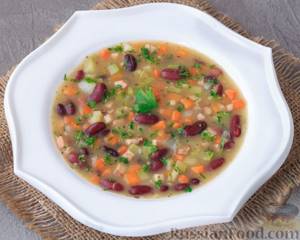
Products (for 4 servings)
- Canned beans – 2 cans (420 g each)
- Smoked brisket – 120 g
- Zucchini – 140 g
- Carrots – 100 g
- Onions – 120 g
- Corn flour – 45 g
- Provençal herbs – 1-2 teaspoons
- Bay leaf – 1 pc.
- Salt - to taste
- Ground black pepper - to taste
- Fresh parsley – 10 g
Preparation
- Prepare your ingredients.
- Peel the onions and carrots.
- Finely chop the smoked brisket, zucchini, carrots and onions.
- In a small container, combine corn flour with 6-7 tbsp. spoons of cold water. Mix the mixture thoroughly so that there are no lumps left.
- Heat vegetable oil in a thick-bottomed saucepan. Add onions and brisket. Fry, stirring occasionally, until golden, about 10 minutes.
- Add carrots and zucchini and fry for another 10 minutes.
- Drain the beans. Add beans to the pan.
- Then pour in 1.3 liters of water, add dried herbs and bay leaf. Bring the soup to a boil and cook for 1-2 minutes.
- Then reduce the heat to low.
- Stirring the soup constantly, add the cornmeal and water mixture to the pan. Mix everything well, increase the heat and bring the soup to a boil again. Simmer the soup for another 7 minutes until it thickens.
- Taste the soup and add salt and ground black pepper to taste.
- Finely chop the parsley leaves. Set aside a few leaves to garnish the dish. Add the chopped greens to the pan and turn off the heat.
- Bean soup with zucchini is ready. Sprinkle each portion of the dish with a pinch of herbs and serve. Bon appetit!
Bean soup recipe for children
The soup prepared according to this recipe is very aromatic, light and satisfying. This is especially important when you need to feed a small and very picky child.
Advice
: having a figured knife and a little imagination will help to diversify your lunch. Feel free to cut vegetables into stars, waves or other shapes to make it more interesting for your baby to eat!
Soup is considered a low-calorie dish, but adding cream, butter, cheese and other high-fat ingredients increases the calorie count. Borscht cooked in water contains less than 40 kcal/100 ml, while Ukrainian borscht with meat prepared according to the classic recipe contains more than 60 kcal/100 ml. Soups made from lentils, peas and beans cannot be called low-calorie, but they contain vegetable protein, which provides a person with a feeling of fullness for a long time.
IT IS IMPORTANT TO KNOW! Fortune teller Baba Nina:
“There will always be plenty of money if you put it under your pillow...” Read more >>
Tomato soup with pumpkin and beans
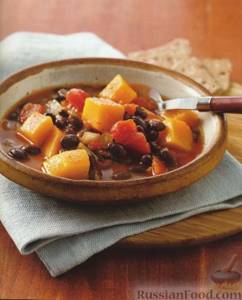
Products
- Nut pumpkin – 500-550 g
- Black beans, canned or boiled – 425 g
- Canned tomatoes in their own juice – 400 g
- Vegetable broth or water – 1 cup
- Onions – 1 pc.
- Garlic – 1 clove
- Cumin – 1 tbsp. spoon
- Red pepper flakes – 0.25 teaspoon
- Ground black pepper – 0.25 teaspoon
- Salt – 1 pinch
- Olive oil – 1 tbsp. spoon
How to make Tomato Pumpkin Black Bean Soup:
- 1. Finely chop the onion and garlic.
- 2. Cut the tomatoes into cubes (use together with the juice in which they were preserved).
- 3. Peel and seed the pumpkin and cut into cubes.
- 4. Heat oil in a saucepan, add onion and garlic. Cook, stirring, for 3 minutes until the onion softens.
- 5. Add remaining ingredients. Bring to a boil, reduce heat, cook for 40 minutes (until the pumpkin is done).
Serve tomato soup with pumpkin and beans immediately after cooking. Bon appetit!
Table of calorie content of first courses and their nutritional value
Diet soup or borscht is prepared with water, without adding butter, sour cream or meat. One plate of this dish contains a minimum amount of calories (about 100 kcal per serving).
A bowl of chicken soup with potatoes contains about 150 kcal, and rice soup cooked in meat broth with the addition of sour cream contains more than 200 kcal.
The calorie content of first courses and their nutritional value (BJU) are presented in the table.
| Soup variety | BJU (content per 100 grams of product) | Number of calories (kcal) in 100 grams of soup (100 ml) | Calorie content per serving (300 grams) |
| Pea | 3,6/0,9/11,15 | 68,5 | 205,5 |
| Bean | 3,95/1,95/10,15 | 65,5 | 196,5 |
| Borscht cooked in chicken broth | 4,55/1,6/4,4 | 48 | 144 |
| Lenten borscht | 0,7/2,4/2,15 | 37 | 111 |
| Borscht cooked in meat broth with beef | 4,15/1,8/2,2 | 59 | 177 |
| Borscht with pork | 2,1/2,4/6,5 | 70 | 210 |
| Minestrone (vegetable soup) | 1,5/1,7/6,1 | 39 | 117 |
| Kharcho | 3/4,55/5,9 | 67 | 201 |
| Chicken meatball soup | 4,4/3/2,7 | 45,5 | 136,5 |
| Chicken with noodles | 4,8/3,4/6,7 | 55 | 165 |
| Oat | 1,4/1,6/5,55 | 39,5 | 118,5 |
| Potato with pasta | 1,6/0,95/8,9 | 54 | 162 |
| White cabbage soup | 0,3/1,55/1,9 | 26 | 78 |
| Mushroom with buckwheat | 0,7/3,15/4,35 | 49,5 | 148,5 |
Lenten cabbage soup with champignons and beans
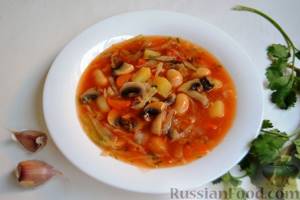
Products (for 8 servings)
- White cabbage (young) – 0.5 heads
- Canned beans – 300 g
- Large champignons – 4 pcs.
- Onions – 1 pc.
- Potatoes – 3 pcs.
- Tomato paste – 70 g
- Bay leaf – 1 pc.
- Vegetable oil – 1 tbsp. spoon
- Ground black pepper – 1 pinch
- Salt - to taste
- Parsley – 2-3 sprigs
- Dill greens – 2-3 sprigs
- Water – 2.5 l
Preparation
- We prepare the products necessary for preparing lean cabbage soup with mushrooms and beans.
- Drain liquid from canned beans.
- Place a pan of water on the fire. Peel the potatoes, wash them, cut them into cubes and place them in boiling water. Cook the potatoes for 10 minutes.
- Peel the onion and cut into small cubes.
- Peel the carrots and cut into semicircles.
- Place the chopped onions and carrots in a frying pan heated with vegetable oil and sauté over low heat until soft, 7-10 minutes.
- Cut the champignons into slices.
- When the potatoes are almost ready, add canned beans, fried onions and carrots and champignons to the pan. Cook for 5 minutes.
- Finely chop the young cabbage.
- Finely chop the greens.
- Place the cabbage and greens in the pan and cook for another 5 minutes. At this stage, add salt and pepper. Add bay leaf.
- Lightly fry the tomato paste in a dry frying pan for 1-2 minutes.
- Add tomato paste to the pan. Cook the cabbage soup with mushrooms and beans for another 2-3 minutes. Turn off the heat, cover the pan with a lid and leave the cabbage soup to steep for 10 minutes.
- Pour lean cabbage soup with mushrooms and beans into plates.
- Bon appetit!
How to reduce calories?
To reduce the energy value of the first dish, you need to adhere to the following rules:
- 1. Do not fry vegetables.
You should avoid frying or do it with a minimum amount of vegetable oil. Refined sunflower oil contains more than 900 kcal, and unrefined olive oil contains about 850 kcal. Amaranth contains about 700 kcal. - 2. Use meat without skin.
It is necessary to remove it from poultry meat before cooking chicken or turkey broth, and clean pork and beef from films, veins and cut off fat. - 3. Avoid fatty sauces.
High-calorie mayonnaise should be replaced with low-fat sour cream. When preparing cream soup, you should not use heavy homemade cream, but 10% pasteurized cream. Milk with minimal fat content should be added to milk soup. - 4. Drain the first broth.
It is necessary to cook the soup not in the first, but in the second or third broth. To do this, after boiling, drain the water and get clean water, and when it boils, you can add cereals and vegetables.
If cheese is specified in the recipe for the first course, then low-fat varieties should be used. There is no need to add processed cheese (their calorie content is about 300 kcal/100 g).
And a little about secrets...
The story of one of our readers Alina R.:
I was especially depressed about my weight. I gained a lot, after pregnancy I weighed as much as 3 sumo wrestlers together, namely 92 kg with a height of 165. I thought the belly would go away after giving birth, but no, on the contrary, I began to gain weight. How to cope with hormonal changes and obesity? But nothing disfigures or makes a person look younger than his figure. At the age of 20, I first learned that plump girls are called “WOMAN” and that “they don’t make clothes that size.” Then at the age of 29, divorce from her husband and depression...
But what can you do to lose weight? Laser liposuction surgery? I found out - no less than 5 thousand dollars. Hardware procedures - LPG massage, cavitation, RF lifting, myostimulation? A little more affordable - the course costs from 80 thousand rubles with a nutritionist consultant. You can, of course, try to run on a treadmill until you go crazy.
When selecting products for implementing a healthy nutrition system, attention is drawn to the recommendation to increase the amount of vegetable protein. Often the most accessible source of it is legumes. A representative of this family, found everywhere in gardens and on store shelves, is beans.
Benefit for health
Beans contain a fairly high percentage of protein: 6–8 g per 100 g, pods - about 1.5 g. It is absorbed quite completely. In addition, this product, beloved by many people, contains a valuable set of vitamins (including nicotinic acid and carotene) and microelements (calcium, magnesium, iron and others). The fiber contained in legumes helps improve intestinal function, but there is a side effect: excess gas formation, which can be avoided by properly preparing the product. These data inspire optimism in those wishing to lose weight and encourage them to include the product in their diet.
The presence of an impressive list of useful substances allows you not only to lose weight, but also to improve the health of the entire body: strengthen hair and nails with calcium; improve the functioning of the hematopoietic system by supplying iron - a material for red blood cells.
Calories depend on the type of product and how it is prepared.
On average, the calorie content of beans is estimated at 265 kcal per 100 grams of dry product. But, naturally, it is not consumed in its solid raw form. Beans contain a high content of glycosides, which are toxic to the human body, but are easily destroyed when heated.
And the caloric content for a raw or thermally processed product varies for representatives of different species. So, boiled red beans contain about 93 kcal, white - 102 kcal, black - 132 kcal. If you use pods rather than beans, the calorie content will drop to 28 kcal. This energy value is provided by the presence of complex carbohydrates, so the release of calories occurs gradually, maintaining a feeling of fullness for a long time.
Calorie content of different dishes
To better absorb nutrients and reduce negative consequences, it is advisable to consume legumes in combination with other plant products. So, to successfully obtain calcium, it is better to add vegetables containing vitamin C to them, and the use of spices, such as cardamom, will reduce gas formation. Therefore, to determine the calorie content of dishes, it is necessary to take into account the energy value of companion products.
The most common food options include bean soup, stew, salad and steamed beans. Canned beans are also actively used: they are attractive due to the completed heat treatment.
In terms of energy value, soup is the least high-calorie dish, it contains only 62 kcal per 100 g. When preparing boiled beans for salad, there is also a reduction in calorie content, and the presence of vegetables improves the absorption of microelements. When stewing, such as for stews, the number of calories increases due to the addition of fat and can amount to 150-200 units.
The best preservation of nutrients, in the opinion of nutritionists, is achieved by using a slow cooker.
Dietary properties:
What calorie content does bean soup have, what beneficial properties does it have? All this is of great interest to those who lead a healthy lifestyle and monitor their health and figure. So we will try to answer these questions in the next article.
So here it is:
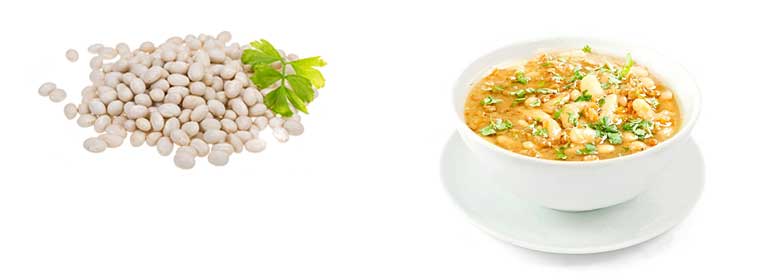
Ripe bean grains contain up to 20% protein, 50% carbohydrates, about 2% fat, fiber, ascorbic acid, B vitamins, potassium (up to 530 mg per 100 g), phosphorus (up to 530 mg per 100 g). It is also rich in vitamins C, PP, provitamin A. In terms of copper and zinc content, it surpasses most vegetables. The pods contain betaine, arginine, tryptophan, tyrosine, leucine, lysine, asparagine, choline, and hemicellulose.
Beans help strengthen blood vessels, cleanse the blood, and normalize heart rate. Vitamin E, a natural antioxidant, strengthens blood vessels and improves heart function. Arginine also has a beneficial effect on the cardiovascular system. The large amount of iron in it causes an influx of oxygen to blood cells, which affects the production of red blood cells and increases the body's resistance to infections. It is used to prepare decoctions for atherosclerosis, stress, nervous exhaustion, kidney disease, rheumatism, pancreatitis, and skin diseases.
Beans are the most important, if not the main, component of vegetarian dietary dishes. It is used in many fasting diets. In cooking, it is used to prepare soups, main courses, side dishes for fish, vegetable, meat dishes, sauces, casseroles, salads and even desserts.
Bean recipes for weight loss
There is an opinion that soaking is a necessary condition for cooking legumes. But it can be completely replaced by draining the first cooking water immediately after boiling - this gives approximately the same effect, while significantly saving time.
Advice from nutritionist Irina Shilina
Pay attention to the latest weight loss method. Suitable for those for whom sports activities are contraindicated.
Bean soup
There are many variations of this dish, both lean and with meat broth. The vegetarian version involves preparing a decoction (draining off the first water), to which potatoes, onions, carrots and tomatoes (can be fresh or as tomato paste), and vegetable oil are added. Once the soup is ready, add some salt and spices.
To prepare it you will need:
- white beans - 1 cup;
- 1–2 potatoes;
- bulb;
- one medium carrot;
- a tablespoon of vegetable oil.
However, the last ingredient is not considered mandatory. When using meat broth, it is recommended to carry out the preparatory stage for the beans separately, and only then add them to the pan. The remaining products retain their order of introduction. The estimated time from the start of the process to receiving the finished dish is an hour.
Bean salad
This hearty and healthy dish includes the following ingredients.
No additional heat treatment is required for the ingredients of this dish.
Vegetable stew
To create this delicacy, almost a culinary masterpiece, and with low calorie content, you will need:
- a glass of dry red beans;
- one young zucchini;
- one onion;
- one carrot;
- a glass of tomato juice or half a glass of tomato paste;
- vegetable oil.
Fry the zucchini, carrots and onions, cut into cubes, in hot oil in a high-sided bowl. The beans must be boiled until they become soft but not crumbly. Then add them to the vegetables and stir over the heat for 5-6 minutes. Pour in tomato juice or paste diluted with water to the volume of one glass. Simmer in a sealed container until cooked, then add salt and spices. It is better to serve sprinkled with finely chopped herbs.
Green beans in a slow cooker
The simplest and healthiest recipe for preparing it is steamed. For this you will need:
- only fresh or frozen pods themselves (400 g);
- some water;
- salt;
- sesame;
- olive oil.
Place the prepared pods in an even layer, pour a little water into the multicooker and place the tray. Cook for 10–15 minutes, after which you need to add salt and sprinkle with sesame seeds. Pour two tbsp. spoons of oil, mix. Serve with fresh vegetables: tomato, sweet pepper, herbs.
When using beans as the basis of a weight loss diet, you must remember that they put a significant strain on the pancreas and can also cause flatulence and bloating. To reduce these negative effects, you should soak them or drain the water during the first boiling, and increase the cooking time. But the low calorie content of the resulting dishes, their saturation with vitamins and microelements contribute to the health of the body and weight loss.
Soups are not prepared with anything in different countries: wine and champagne, beer, brine, fruit and vegetable juices, and even blood mixed with vinegar. And what are the ingredients: hippopotamus meat, live bats, animal hooves, deer placenta, bird nests! And many of these first courses are considered beneficial to human health. But some nutritionists have claimed in recent years that their healing power is exaggerated, and fatty broths are even harmful to our gastrointestinal tract.
The benefits and harms of soups
On the one hand, soups are very nutritious, but still lower in calories than main courses (especially fried ones). These dishes supply the human body with the amount of energy it needs, stimulate metabolism, are quickly absorbed, and regulate blood pressure. Cereal soups cooked in water improve intestinal health and remove harmful toxins. The first dish, prepared from fresh vegetables according to all the rules, can be called a dietary dish.
Proponents of separate nutrition, on the other hand, say that the liquid fraction dilutes the gastric juice and therefore worsens digestion
. They also claim that meat broths poison our body with poisons that are formed during cooking and are supplied to animals with food (hormones, antibiotics, growth accelerators).
Who is right: a distant ancestor who threw a piece of fresh meat from a killed animal into a clay pot of water and warmed himself with broth in the winter cold, or a contemporary who bought a semi-finished meat product (or even ready-made canned soup) in the nearest supermarket? There is no exact answer yet, but there are recommendations from nutritionists to monitor the calorie content of all dishes and prepare them only from high-quality food products.
Calorie content of various soups
| calorie content per 100g, kcal | |
| Calories in chicken soup | 25 |
| Calorie content of chicken noodle soup | 45 |
| Calorie content of pea soup | 66 |
| Calorie content of bean soup | 62 |
| Calorie content of mushroom soup | 26 |
| Calorie content of vegetable soup | 23 |
| Calories in meatball soup | 49 |
| Calorie content of fish soup | 28 |
| Calorie content of cheese soup | 53 |
| Calorie content of rice soup | 38 |
| Calorie content of buckwheat soup | 66 |
| Calorie content of borscht | 129 |
| Calorie content of milk soup | 58 |
| Calorie content of noodles | 38 |
In order to diversify the menu, you can include puree soups
. They have a delicate consistency and have a positive effect on the human digestive system. Regular soups are also healthy, you can’t refuse them. Calorie content depends on the recipe and is calculated separately in each case.
Tuscan vegetable soup with beans
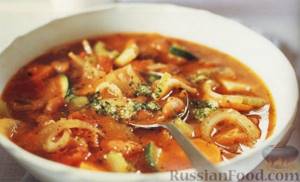
Products (for 6 servings)
- White beans, canned (washed, drained) – 400 g
- Zucchini (cut into slices) – 2 pcs.
- Canned tomatoes without skin (chopped) – 400 g
- Carrots (cut into slices) – 2 pcs.
- Garlic (chopped) – 4 cloves
- Petiole celery (chopped) – 2 stalks
- Fennel (chopped) – 1 pc.
- Olive oil – 45 g
- Onions (chopped) – 2 pcs.
- Pesto sauce – 30 g
- Vegetable broth – 900 g
- Salt - to taste
- Ground black pepper - to taste
*
For serving:
- Olive oil – 15 g
- Young spinach – 450 g
- Ground black pepper - to taste
- Olive oil
Preparation
- 1. In a large, thick saucepan over medium heat, heat 45 g of olive oil, add onion, carrots, garlic, celery and fennel, cook for about 10 minutes. Add zucchini, cook for another 2 minutes.
- 2. Add tomatoes, pesto, beans and broth to the pan and bring to a boil. Reduce heat, cover the pan with a lid, and cook the vegetable soup with beans for 25-30 minutes. Add salt and pepper to taste.
- 3. Heat 15 g olive oil in a large frying pan over medium heat, add spinach leaves and cook until wilted, about 2 minutes.
- 4. Place fried spinach leaves in each of 6 serving bowls and pour in the soup. Sprinkle the soup with black pepper and drizzle with olive oil. Serve the vegetable and bean soup immediately.
